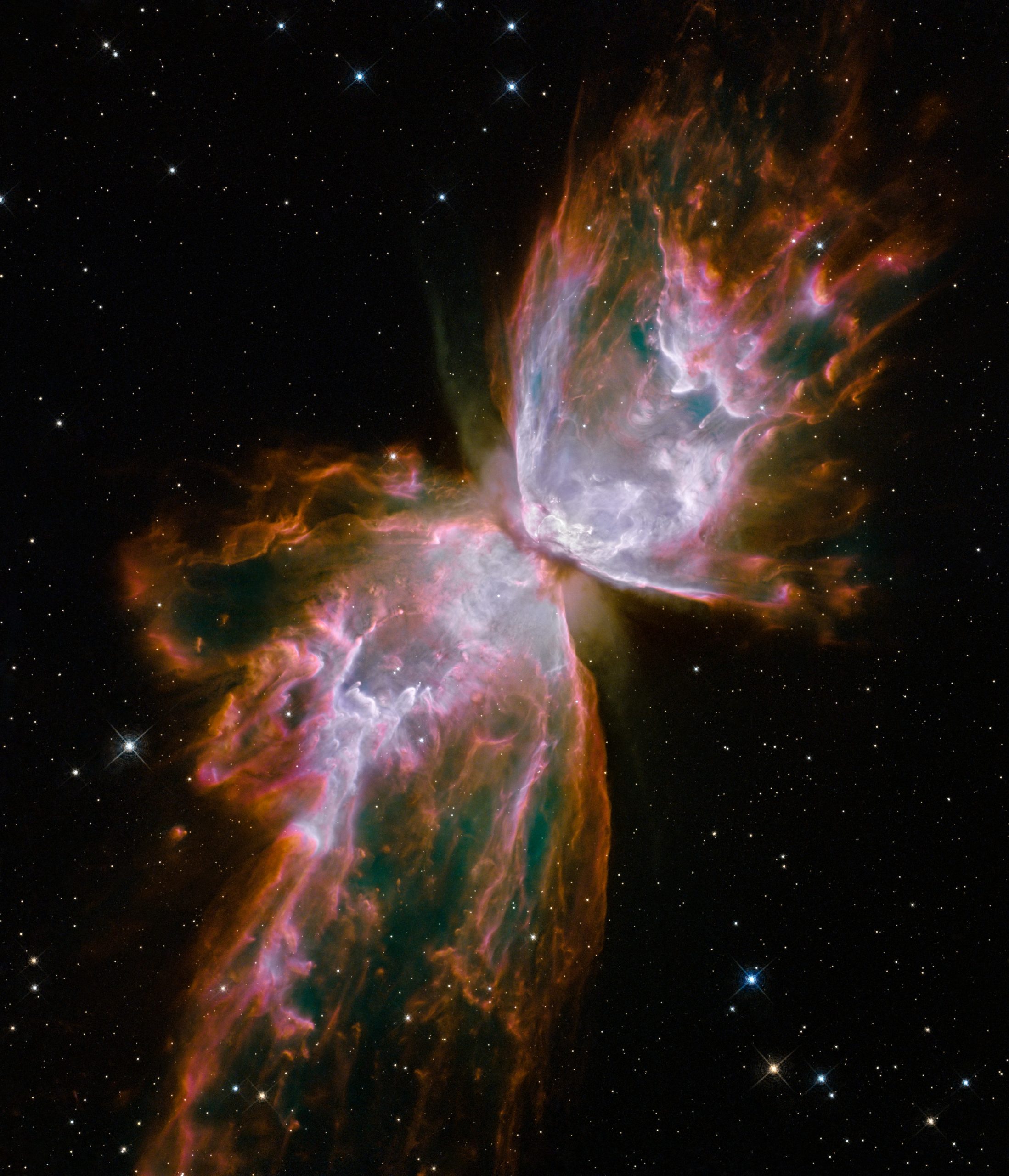
This celestial object looks like a delicate butterfly. But it is far from serene. What resemble dainty butterfly wings are actually roiling cauldrons of gas heated to nearly 20 000 degrees Celsius. The gas is tearing across space at more than 950 000 kilometres per hour — fast enough to travel from Earth to the Moon in 24 minutes! A dying star that was once about five times the mass of the Sun is at the centre of this fury. It has ejected its envelope of gases and is now unleashing a stream of ultraviolet radiation that is making the cast-off material glow. This object is an example of a planetary nebula, so-named because many of them have a round appearance resembling that of a planet when viewed through a small telescope. The Wide Field Camera 3 (WFC3), a new camera aboard the NASA/ESA Hubble Space Telescope, snapped this image of the planetary nebula, catalogued as NGC 6302, but more popularly called the Bug Nebula or the Butterfly Nebula. WFC3 was installed by NASA astronauts in May 2009, during the Servicing Mission to upgrade and repair the 19-year-old Hubble. NGC 6302 lies within our Milky Way galaxy, roughly 3800 light-years away in the constellation of Scorpius. The glowing gas is the star’s outer layers, expelled over about 2200 years. The “butterfly” stretches for more than two light-years, which is about half the distance from the Sun to the nearest star, Proxima Centauri. The central star itself cannot be seen, because it is hidden within a doughnut-shaped ring of dust, which appears as a dark band pinching the nebula in the centre. The thick dust belt constricts the star’s outflow, creating the classic “bipolar” or hourglass shape displayed by some planetary nebulae. The star’s surface temperature is estimated to be over 220 000 degrees Celsius, making it one of the hottest known stars in our galaxy. Spectroscopic observations made with ground-based telescopes show that the gas is roughly 20 000 degrees Celsius, which is unusually hot compared to a t
Many investors are too conservative at an early age. In other words, they are “stock market shy.” Don’t load up your portfolio with bonds when you are in your twenties and you have forty years to save.
Let me illustrate this mistake with a real example. Husband and wife saved identical amounts during their working years. The wife’s savings were divided almost equally between a portfolio of bonds and stocks. The husband’s portfolio contained only stocks. Upon retirement, the husband’s portfolio was worth approximately twice that of the wife even though the amount invested was the same. This example illustrates the reasons I tend to shun bonds or use them with caution. There is an argument to be made that the longer one invests, the greater the probability of a “Black Swan” or “Fat Tail” market event. Search for Zvi Bodie for more information.
Upon retirement, will you have a pension? Do you know the approximate monthly payout from that pension? If one can retire on a pension and social security, then the portfolio need not include bonds. One can read more about this position in William Bernstein’s second book, “The Four Pillars of Investing: Lessons for Building a Winning Portfolio.“
Summary: Plan to live longer than you might expect and do not be too conservative when constructing your portfolio, particularly when you are young and have time to rebound from a bear market.
Discover more from ITA Wealth Management
Subscribe to get the latest posts sent to your email.
Lowell,
Yes I made that mistake when I started with TIAA-CREF in 1971. Chose 50/50 until I became more interested in investing in the 80’s. Subsequently I always told new young faculty do at least 75% equities. In the same spirit I start my grandchildren off at 18 with IRAs that are 100% equities. I find it much better than pondering where they fit into our will:^)
Bob W.